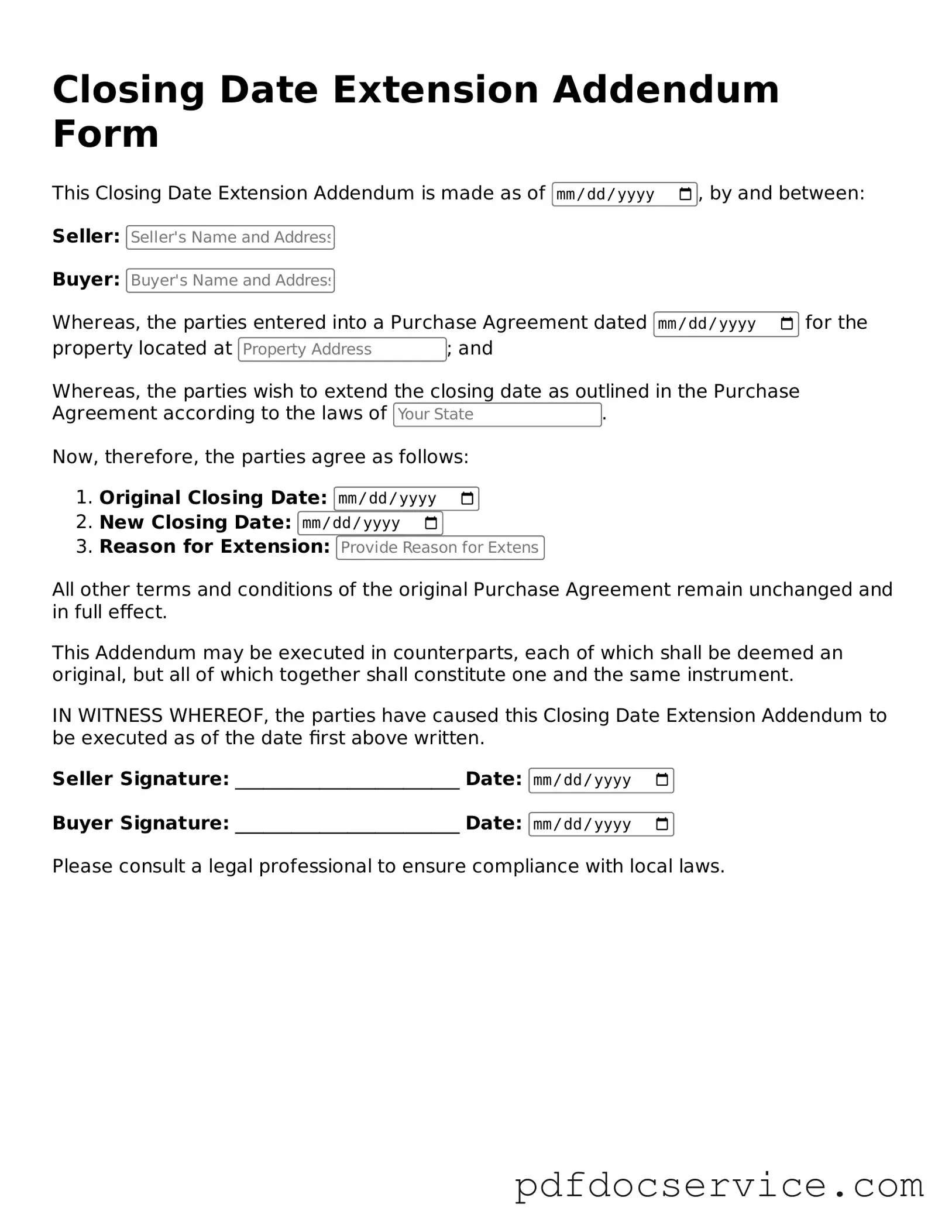The Closing Date Extension Addendum Form is a legal document used in real estate transactions. It allows parties involved in a sale to formally extend the closing date of a property. This extension can be necessary for various reasons, such as delays in financing, inspections, or other contingencies that have not been met by the original closing date.
This form should be used when both the buyer and seller agree to extend the closing date. Common situations that may warrant an extension include:
-
Delays in securing financing.
-
Issues arising during home inspections.
-
Title issues that need resolution.
-
Negotiations over repairs or concessions.
It is important that both parties consent to the extension to avoid any potential disputes.
Filling out the form involves providing specific details related to the original closing date and the new proposed closing date. Typically, the following information is required:
-
Names of the buyer and seller.
-
Address of the property.
-
Original closing date.
-
New closing date.
-
Any additional terms or conditions related to the extension.
Ensure that all parties review the document before signing to confirm agreement on the new closing date.
Is there a limit to how many times I can extend the closing date?
There is no specific limit to the number of times a closing date can be extended. However, each extension should be justified and agreed upon by both parties. Frequent extensions may raise concerns and could indicate underlying issues that need to be addressed.
What happens if one party does not agree to the extension?
If one party does not agree to the extension, the original closing date remains in effect. This can lead to complications, such as the potential for the transaction to fall through. It is crucial for both parties to communicate openly and reach a consensus to avoid disputes.
Yes, the Closing Date Extension Addendum Form can be used for various types of real estate transactions, including residential, commercial, and investment properties. However, ensure that the form complies with local laws and regulations, as requirements may vary by state.
While it is not mandatory to have a lawyer to create or use the Closing Date Extension Addendum Form, consulting with a legal professional can provide valuable guidance. A lawyer can help ensure that the form is filled out correctly and that your rights are protected throughout the transaction.
After the form is signed by all parties, keep a copy for your records. It is also advisable to send a copy to your real estate agent and any other relevant parties involved in the transaction. This ensures that everyone is informed of the new closing date and any associated terms.
Can the extension affect my financing?
Yes, extending the closing date can impact your financing. Lenders may require updated documentation or re-evaluation of your loan application if the extension is significant. Communicate with your lender to understand any potential implications and ensure that your financing remains in good standing.
